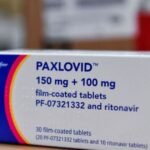[ad_1]
A prospective, longitudinal cohort study found that healthy lifestyle factors decreased risk for peripheral artery disease (PAD). These findings were published in the European Journal of Vascular & Endovascular Surgery.
Data for this study were sourced from the Swedish Infrastructure for Medical Population-based Life-course Environmental Research (SIMPLER) cohorts. For the Cohort of Swedish Men (n = 37,633), all men born between 1918 and 1952 in 2 regions in Sweden were invited to participate in 1997 and for the Swedish Mammography Cohort (n = 31,816) all women born between 1914 and 1948 in 2 regions were invited to participate between 1987 and 1990. For this study, participants responded to a questionnaire about lifestyle habits which were related with incidence of PAD according to data from the National Patient Registry.
During an average 18.1-year follow-up, 1621 men and 1174 women were diagnosed with PAD. The incidence rates of PAD were 2.4 per 1000 person-years among men and 2.0 per 1000 person-years among women and the average age of diagnosis was 75.8 ± 8.8 and 77.1 ± 8.7 years, respectively.
Continue Reading
Stratified by adherence to 4 healthy lifestyle factors (avoiding excessive alcohol intake, consuming a healthy diet, engaging in moderate to high levels of physical activity, and never smoking), those who maintained all 4 healthy habits were older at baseline, more were women, and more had completed post-secondary education.
After adjusting for potential confounders, avoiding excess alcohol intake decreased risk for PAD by 12%, adhering to a healthy diet by 16%, being physically active by 26%, and never smoking by 54%.
Individuals who engaged in 2 (hazard ratio [HR], 0.60; 95% CI, 0.45-0.80), 3 (HR, 0.39; 95% CI, 0.29-0.53), and 4 (HR, 0.29; 95% CI, 0.21-0.39) healthy habits were associated with decreased risk for PAD.
Maintaining a healthy lifestyle was associated with decreased risk for PAD among those with a healthy BMI (18.5-25.0) and in those with an unhealthy BMI (<18.5 or> 25.0).
Similar results were observed in a sensitivity analysis which removed all individuals diagnosed with PAD within 4 years of baseline.
This study may have been biased by relying on self-reported lifestyle habits.
“In summary, the present study indicates that modifiable lifestyle factors play important roles in the prevention of PAD in both men and women,” the study authors wrote. “A healthy diet together with healthy lifestyle behaviors may prevent 40% of symptomatic PAD cases in the community-based population.”
Reference
Yuan S, Damraurer SM, Håkansson N, Åkesson A, Larsson SC. A prospective evaluation of modifiable lifestyle factors in relation to peripheral artery disease risk. European Journal of Vascular and Endovascular Surgery. Published online April 9, 2022. doi: 10.1016 / j.ejvs.2022.04.004
[ad_2]
Source link

